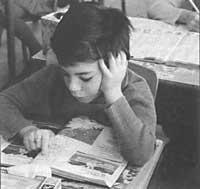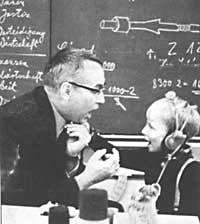Hearing Errors in School
We refer to the one who has total or partially lost the ability to listen as a deaf child.
The causes of this hearing error can be divided into two main groups: acquired and congenital (or original) groups.
- REASONS TAKEN To put it in some way: meningitis, measles, papers, traumatisms during childbirth, ototoxic drugs, etc. They are mentioned above.
- CONGENITAL CAUSES To put it this way, the child is deaf from birth. The main reason is the rubella that the woman suffered during pregnancy. Although the problem is much more complex, we distinguish basically two types of deafness: the deafness of transmission and the perceptive deafness.
Deafness of transmission

In this case, the string of bones inside the ear fails. The person responsible for this middle ear function failure can be a disease, trauma, or other defect. This type of deafness can be treated medically or surgically, recovering the ear.
Perceptive deafness
This affects the inner ear, and in this case the problem is more severe, since with surgery you can hardly get anything. Current surgical techniques are still at the level of research and experimentation.
In this type of deafness, when it comes to serious or profound cases, we must resort to rehabilitation, supported by the prostheses that will remove the child from his solitude and incommunicado, but bearing in mind that he will never achieve the hearing level of a normal listener.
On the other hand, it must be taken into account that as a consequence of deafness, mutism appears in many cases. The child can produce noises (builas, zotinas, crying, screams, etc. ). ), because the voice apparatus is in good condition, but it is not able to say words until it is taught specifically for it.
The child diminished in hearing suffers a delay in the acquisition of language, since it can neither speak nor adopt rules. The normal child gets it by imitation, listening and seeing others, even before taking a systematic teaching. For the diminished auditory, however, this process is much more complicated and laborious, and much slower, since its access to the miner is not natural or natural.
For this reason, the deaf child implies a delay in the acquisition, structuring and pronunciation of the language for when he enters the school, so from very early we must put him in an intensive training while the external stimuli are constant, rich (but well measured).
However, many times no deafness is diagnosed before the child enters school. On the other hand, it may be the case that the child suffers an auditory loss during the queue period. In these cases the professor is responsible for diagnosing or at least suspect these problems that are due to ear problems.
Normally these children will listen well to the teacher if they are not less than 1-2 meters away. But if the teacher turns away or turns around, surely the child will not listen to him. If spoken from the other end of the class, the child can respond late saying “eh?” or “I don’t know.”
If the child is not in a place where he or she can participate in a continuous conversation within the class, he or she will lose attention, appear distracted, or sit in a very forced position to see the face of the speaker.
Medical Recognition Medical Examination
It is necessary to maintain a conversation with the child during observation.
On many occasions, the data provided by parents or teachers can also be very interesting.
What procedures can the doctor use in this recognition?
- Speaking in a low voice
- Speaking from behind (back)
- Talk at a certain distance
- Make the tik-tak of a watch sound alternately in one and another ear (but always at the same distance)
Both ears should be analyzed separately.
In this study the fingerboard can be used. The fingerboard (once put to vibrate) to differentiate two types of deafness approaches the ear.
- Bone transmission. It is placed next to the ear.
- Air transmission. It is placed on the head.
Practical recommendations for the teacher

When a teacher has a poor hearing in his classroom, we will give some tips to make the integration of the student the best possible.
- Before the student with hearing impairments enters his classroom (or if the problem appears later, after knowing it) it is appropriate to create a good environment among his/her peers. To do this, the first thing to explain is that the deaf child is like the other children. It must be clarified that you need a listening tool for other children, just as they need glasses to see others. We must warn them that their attitude in the tasks and games of the classroom should be the same as that of the rest of the children, so that the diminished child will participate and be like anyone among others.
- You must put the affected person in good condition in your room so that they can receive as much information as possible, both from the teacher and other colleagues.
- The deaf child must be spoken slowly, in front and without exaggerated pronouns, so that he can read on the lips and understand what is said. Use short but well-structured phrases.
- If you ask yourself, you have to be sure you have understood it well, insisting or changing the question a little. Note that the increase in voice in perceptive deafness is not going to be a special help, since the fundamental problem is not the intensity of sound. Speak with the same vocal sonority that you address to the rest of the children in the class.
- You can use written notes and instructions when you can.
- Try to reproduce and recover the vocabulary of the diminished child, integrated in your classroom. These children will have special linguistic difficulties. Communication should be mutual (from teacher to student and from student to teacher).
- Give the opportunity to speak as much as to other children.
- Ensure the good state of the prosthesis of these children.
- Remember that, as with normal children (and even more so in these cases), the deaf child hears worse after a cold or cold. Send the child to the specialist.
Buletina
Bidali zure helbide elektronikoa eta jaso asteroko buletina zure sarrera-ontzian











